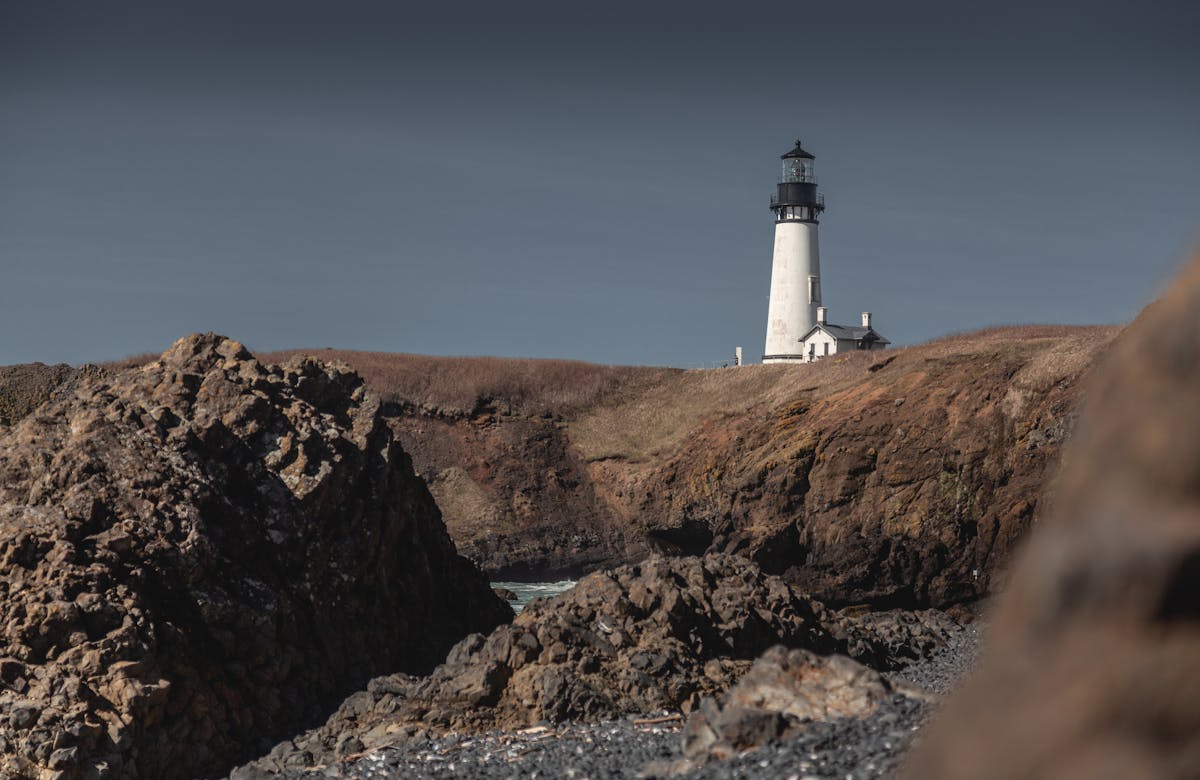Planning a trip to Bend, Oregon? Understanding the Bend Oregon weather yearly cycle is crucial for making the most of your visit. Located in the high desert of Central Oregon, Bend experiences four distinct seasons, each offering unique opportunities for adventure and exploration. From snowy winters perfect for hitting the slopes to hot, sunny summers ideal for river activities, the climate dictates the best time for different experiences. Knowing what to expect throughout the year helps you pack appropriately and plan activities that align with the prevailing conditions.
Bend’s position east of the Cascade Mountains significantly influences its climate. This rain shadow effect means Bend receives far less precipitation than the Willamette Valley to the west. The city enjoys over 300 days of sunshine annually, making it a desirable destination year-round, provided you prepare for the specific seasonal weather. The high desert environment leads to significant temperature swings, often with warm days and cool nights, even in summer. Understanding these patterns is key to enjoying everything Bend has to offer.
Spring in Bend: Awakening Landscapes
Spring in Bend, typically from March to May, is a transitional period. The snow begins to melt, especially at lower elevations, and temperatures gradually rise. Early spring can still feel quite wintery, with possibility of late snow showers or frosty mornings. As the season progresses, days become longer and warmer. Average high temperatures range from the 50s to low 60s (°F), while lows can still dip below freezing in March and April.

This is a time of awakening. Trails at lower elevations start to become accessible for hiking and mountain biking. The rivers swell with snowmelt, offering early-season rafting opportunities for the adventurous. While the mountains still hold significant snowpack, the city and surrounding lowlands green up. Packing layers is essential, as weather can change rapidly. Spring offers fewer crowds than summer, providing a more tranquil experience of Bend’s natural beauty.
Summer in Bend: Sunshine and High Desert Heat
Summer, from June to August, is arguably the most popular time to visit Bend. The Bend Oregon weather yearly peak for warmth and sunshine occurs during these months. Expect consistently hot, dry, and sunny days. Average high temperatures are in the 70s and 80s (°F), often soaring into the 90s or even low 100s (°F) during heat waves. Nights remain pleasantly cool, typically dropping into the 40s or 50s (°F), which is a hallmark of the high desert climate.

Discover the Best – Where to Go on Vacation in Florida
Your Ultimate Guide – what to eat in destin florida
Discover Fun Things to Do in LA Today
Precipitation is minimal in summer, with clear blue skies being the norm. This weather is perfect for all the classic Bend outdoor activities: hiking in the Cascades (once snow melts), mountain biking the extensive trail networks, rock climbing at Smith Rock, and enjoying the Deschutes River. Kayaking, paddleboarding, and floating the river are quintessential Bend summer experiences. Remember to stay hydrated and use sunscreen, as the sun is intense at this elevation.
Fall in Bend: Crisp Air and Shifting Colors
September through November brings the crisp, clear air of autumn to Bend. This season offers a delightful transition from the summer heat to winter’s chill. Temperatures cool down significantly, with average highs ranging from the 70s in September to the 40s by November. Nights become colder, with frost becoming common, especially later in the season.
Fall is an excellent time for hiking and biking as the intense summer heat subsides and the trails are in prime condition. While Bend isn’t known for dramatic fall foliage like some other regions, the larches in the mountains turn a beautiful golden color, and aspens provide pops of yellow. Fishing is also popular in the fall. The drier pattern of summer starts to give way to increasing chances of rain later in the season, and the first snowfalls in the mountains often occur in November.
Winter in Bend: A Snow Lover’s Paradise
Winter in Bend, from December to February, transforms the area into a haven for snow sports enthusiasts. The Bend Oregon weather yearly sees its lowest temperatures and highest precipitation (often as snow) during these months. Average high temperatures hover in the 30s (°F), with lows often well below freezing. Snowfall is common, particularly in the surrounding mountains like Mount Bachelor, which receives abundant powder. The city of Bend itself receives moderate snowfall, enough for a picturesque white landscape, but major accumulations usually melt within a few days in the valley.
This is the prime season for skiing, snowboarding, snowshoeing, and fat biking on snow-covered trails. The cold, dry air often results in sunny winter days, locally known as “bluebird” days, which are perfect for enjoying the snow. While some summer trails are inaccessible, winter opens up new opportunities for exploration on skis or snowshoes. Indoor activities like visiting breweries or enjoying the vibrant downtown scene become popular ways to warm up.
 Map showing data sources relevant to understanding Bend, Oregon weather patterns
Map showing data sources relevant to understanding Bend, Oregon weather patterns
Annual Weather Patterns and What They Mean for Visitors
Understanding the yearly weather patterns helps pinpoint the best time for your desired activities. For snow sports, December through March is ideal. For hiking, biking, and water activities, July and August offer the most reliable warm and dry conditions, though late spring and early fall can also be excellent with fewer crowds. Spring wildflowers appear in late spring, while fall colors peak in the mountains in late September or early October.
Bend’s high desert climate means significant diurnal temperature ranges (difference between day and night temperatures), even in summer. It’s always wise to pack layers, regardless of the season. The sun is strong due to the elevation, so sun protection is important year-round, not just in summer. Wind can also be a factor, especially in spring and fall. While the technical meteorological data (like that from the original source based on MERRA-2 satellite reanalysis and various stations like KBDN, KEUG, and KSLE, adjusted for elevation) provides the foundation for understanding the climate, the practical experience of Bend’s weather translates directly to planning your adventures.
FAQ: Common Questions About Bend’s Weather
- What is the best time to visit Bend Oregon for hiking?
The best times for hiking are generally summer (June-August) for high-elevation trails and late spring (April-May) or early fall (September-October) for lower trails, offering pleasant temperatures and fewer crowds. - Does it snow in Bend Oregon?
Yes, it snows in Bend, primarily from November through March. Mount Bachelor and the surrounding mountains receive heavy snowfall, while the city itself gets moderate, often transient snow. - What is the hottest month in Bend Oregon?
July and August are typically the hottest months in Bend, with average high temperatures often in the 80s or 90s (°F). - What is the driest time of year in Bend?
Summer (June-August) is the driest time of year in Bend, with very little rainfall. - How many sunny days does Bend Oregon get?
Bend is known for its abundant sunshine, averaging over 300 sunny days per year.
Conclusion: Planning Your Trip Based on Bend Oregon Weather Yearly
The Bend Oregon weather yearly cycle offers a diverse range of conditions that support a wide array of outdoor activities throughout the year. Whether you’re chasing powder on the slopes of Mount Bachelor, exploring high desert trails under the summer sun, or enjoying the crisp air of autumn, Bend’s climate plays a central role in the experience. While technical data sources like those used in climate analysis provide the statistical backbone, understanding the practical implications of Bend’s seasonal weather ensures you’re prepared for whatever adventures await you in this vibrant Central Oregon city. So check the forecast, pack smart, and get ready to enjoy the incredible natural playground that Bend offers, no matter the season.
